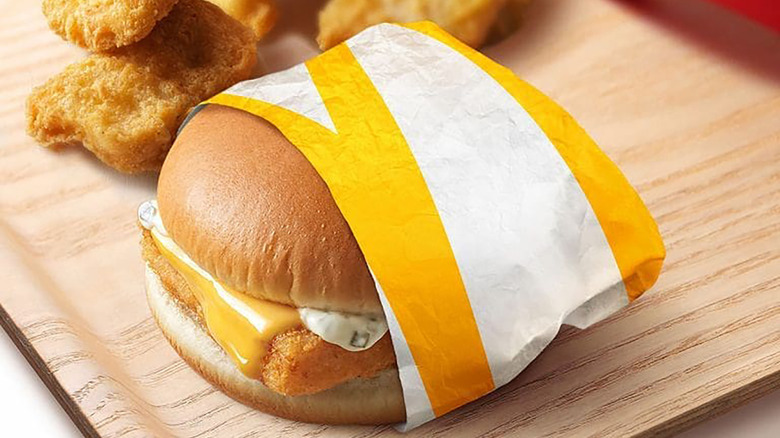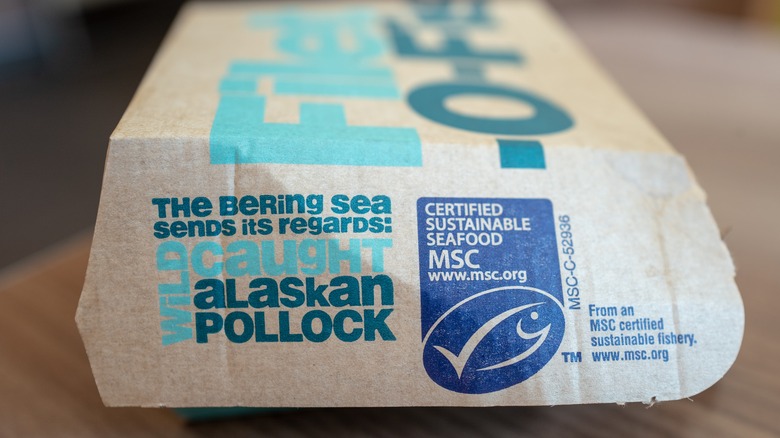The Little-Known Fact About McDonald's Filet-O-Fish
The Filet-O-Fish has an interesting history, having been introduced in 1962 to appeal to a Roman Catholic community who didn't eat meat on Fridays. One thing you may not know about this square-patty sandwich, however, is that the version we know and love is significantly different from the sandwich first served in Cincinnati, Ohio.
Despite what your inner cynic may tell you, the Filet-O-Fish has always used a patty of real fish — that's why it's so delicious. Which species of fish was first used varies depending on whose account you read. Some sources state the original patty was made from halibut, while others claim it was New Zealand hoki. Whichever is true, neither fish is used in the current sandwich. These days, McDonald's exclusively uses Alaskan pollock, one of the most popular species of white fish.
Precisely when the franchise made the switch is unclear, although it's reasonable to assume that it would coincide with a 2013 announcement declaring McDonald's blue label certified, a sustainability marker granted by the Marine Stewardship Council (MSC). Both contenders for the previous fish fit into this narrative, as they have both faced considerable issues with sustainable sourcing.
Why did McDonald's ditch its previous catch?
Both hoki and halibut are considered "red-list" fish, meaning commercial harvest is dangerous for the longevity of both the species and the environment they live in. Halibut matures slowly, which leaves it highly vulnerable to overfishing — the fish cannot grow and breed quickly enough to repopulate under most commercial fishing regimes.
Hoki, on the other hand, has faced an underpopulation problem for several years, leading to a dedicated repopulation effort in 2006. New Zealand hoki has since been re-certified by the MSC, but stock levels are still declining due to the overfishing of young hoki. Similarly to halibut, this taking of young fish prevents the overall population from growing at a sustainable level. The method used to catch hoki is also considered to be destructive, causing damage to underwater habitats and indiscriminately catching other marine life that lives in the same area as hoki. Rather than being used, the extra catch is typically dumped overboard.
Surprisingly enough, pollock makes the red list as well, although this is largely due to the impact on other species. Atlantic pollock tends to live in the same habitat as cod, for instance, which has seen a devastating population decline in some areas. Because of how pollock is caught, it's inevitable that some cod will end up in the net. Wild Alaskan pollock, which McDonald's uses, is a notable exception. This species' fishery is certified by both the MSC and Responsible Fisheries Management (RFM) programs.

